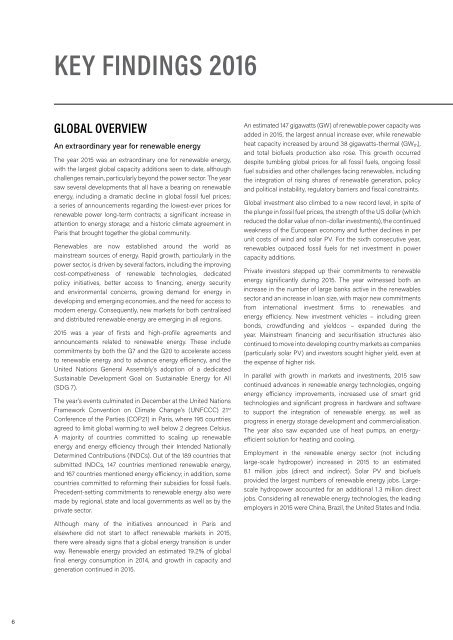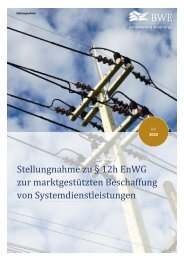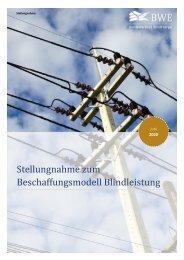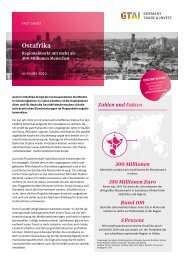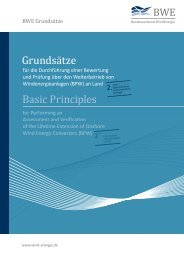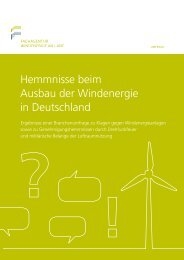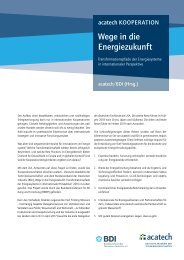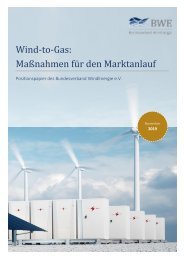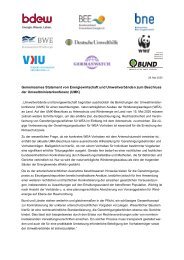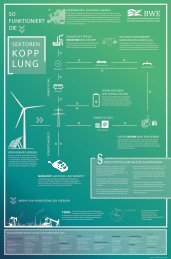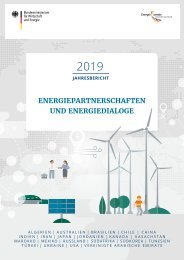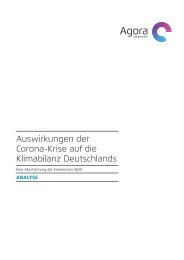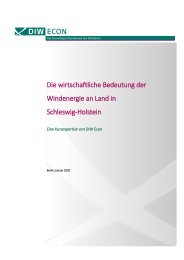Global Status Report 2016 - Key Findings
Der Renewables 2016 Global Status Report zeigt, dass erneuerbare Energien sich heute als wettbewerbsfähige und wichtige Energiequellen in vielen Ländern der Welt etabliert haben. 2015 war ein Rekordjahr für die Installation von erneuerbaren Energieanlagen. Der Zubau erneuerbarer Energiekapazität für die Stromproduktion verzeichnete mit 147 Gigawatt (GW) den größten Anstieg seiner Geschichte. Auch die Nutzung moderner Erneuerbarer für Wärmeerzeugung und im Verkehrssektor nahm zu. Dezentrale erneuerbare Energien verbreiten sich rapide und helfen somit die Lücke zwischen den„ Energiereichen“ und „Energiearmen“ zu schließen...... Herausgeber: Renewable Energy Policy Network for the 21. Century (REN21), Juni 2016
Der Renewables 2016 Global Status Report zeigt, dass erneuerbare Energien sich heute als wettbewerbsfähige und wichtige Energiequellen in vielen Ländern der Welt
etabliert haben.
2015 war ein Rekordjahr für die Installation von erneuerbaren Energieanlagen. Der Zubau erneuerbarer Energiekapazität für die Stromproduktion verzeichnete mit 147 Gigawatt (GW) den größten Anstieg seiner Geschichte.
Auch die Nutzung moderner Erneuerbarer für Wärmeerzeugung und im Verkehrssektor nahm zu. Dezentrale erneuerbare Energien verbreiten sich rapide und helfen somit die Lücke zwischen den„ Energiereichen“ und „Energiearmen“ zu schließen......
Herausgeber: Renewable Energy Policy Network for the 21. Century (REN21), Juni 2016
Create successful ePaper yourself
Turn your PDF publications into a flip-book with our unique Google optimized e-Paper software.
KEY FINDINGS <strong>2016</strong><br />
GLOBAL OVERVIEW<br />
An extraordinary year for renewable energy<br />
The year 2015 was an extraordinary one for renewable energy,<br />
with the largest global capacity additions seen to date, although<br />
challenges remain, particularly beyond the power sector. The year<br />
saw several developments that all have a bearing on renewable<br />
energy, including a dramatic decline in global fossil fuel prices;<br />
a series of announcements regarding the lowest-ever prices for<br />
renewable power long-term contracts; a significant increase in<br />
attention to energy storage; and a historic climate agreement in<br />
Paris that brought together the global community.<br />
Renewables are now established around the world as<br />
mainstream sources of energy. Rapid growth, particularly in the<br />
power sector, is driven by several factors, including the improving<br />
cost-competiveness of renewable technologies, dedicated<br />
policy initiatives, better access to financing, energy security<br />
and environmental concerns, growing demand for energy in<br />
developing and emerging economies, and the need for access to<br />
modern energy. Consequently, new markets for both centralised<br />
and distributed renewable energy are emerging in all regions.<br />
2015 was a year of firsts and high-profile agreements and<br />
announcements related to renewable energy. These include<br />
commitments by both the G7 and the G20 to accelerate access<br />
to renewable energy and to advance energy efficiency, and the<br />
United Nations General Assembly’s adoption of a dedicated<br />
Sustainable Development Goal on Sustainable Energy for All<br />
(SDG 7).<br />
The year’s events culminated in December at the United Nations<br />
Framework Convention on Climate Change’s (UNFCCC) 21 st<br />
Conference of the Parties (COP21) in Paris, where 195 countries<br />
agreed to limit global warming to well below 2 degrees Celsius.<br />
A majority of countries committed to scaling up renewable<br />
energy and energy efficiency through their Intended Nationally<br />
Determined Contributions (INDCs). Out of the 189 countries that<br />
submitted INDCs, 147 countries mentioned renewable energy,<br />
and 167 countries mentioned energy efficiency; in addition, some<br />
countries committed to reforming their subsidies for fossil fuels.<br />
Precedent-setting commitments to renewable energy also were<br />
made by regional, state and local governments as well as by the<br />
private sector.<br />
An estimated 147 gigawatts (GW) of renewable power capacity was<br />
added in 2015, the largest annual increase ever, while renewable<br />
heat capacity increased by around 38 gigawatts-thermal (GW th ),<br />
and total biofuels production also rose. This growth occurred<br />
despite tumbling global prices for all fossil fuels, ongoing fossil<br />
fuel subsidies and other challenges facing renewables, including<br />
the integration of rising shares of renewable generation, policy<br />
and political instability, regulatory barriers and fiscal constraints.<br />
<strong>Global</strong> investment also climbed to a new record level, in spite of<br />
the plunge in fossil fuel prices, the strength of the US dollar (which<br />
reduced the dollar value of non-dollar investments), the continued<br />
weakness of the European economy and further declines in per<br />
unit costs of wind and solar PV. For the sixth consecutive year,<br />
renewables outpaced fossil fuels for net investment in power<br />
capacity additions.<br />
Private investors stepped up their commitments to renewable<br />
energy significantly during 2015. The year witnessed both an<br />
increase in the number of large banks active in the renewables<br />
sector and an increase in loan size, with major new commitments<br />
from international investment firms to renewables and<br />
energy efficiency. New investment vehicles – including green<br />
bonds, crowdfunding and yieldcos – expanded during the<br />
year. Mainstream financing and securitisation structures also<br />
continued to move into developing country markets as companies<br />
(particularly solar PV) and investors sought higher yield, even at<br />
the expense of higher risk.<br />
In parallel with growth in markets and investments, 2015 saw<br />
continued advances in renewable energy technologies, ongoing<br />
energy efficiency improvements, increased use of smart grid<br />
technologies and significant progress in hardware and software<br />
to support the integration of renewable energy, as well as<br />
progress in energy storage development and commercialisation.<br />
The year also saw expanded use of heat pumps, an energyefficient<br />
solution for heating and cooling.<br />
Employment in the renewable energy sector (not including<br />
large-scale hydropower) increased in 2015 to an estimated<br />
8.1 million jobs (direct and indirect). Solar PV and biofuels<br />
provided the largest numbers of renewable energy jobs. Largescale<br />
hydropower accounted for an additional 1.3 million direct<br />
jobs. Considering all renewable energy technologies, the leading<br />
employers in 2015 were China, Brazil, the United States and India.<br />
Although many of the initiatives announced in Paris and<br />
elsewhere did not start to affect renewable markets in 2015,<br />
there were already signs that a global energy transition is under<br />
way. Renewable energy provided an estimated 19.2% of global<br />
final energy consumption in 2014, and growth in capacity and<br />
generation continued in 2015.<br />
6


